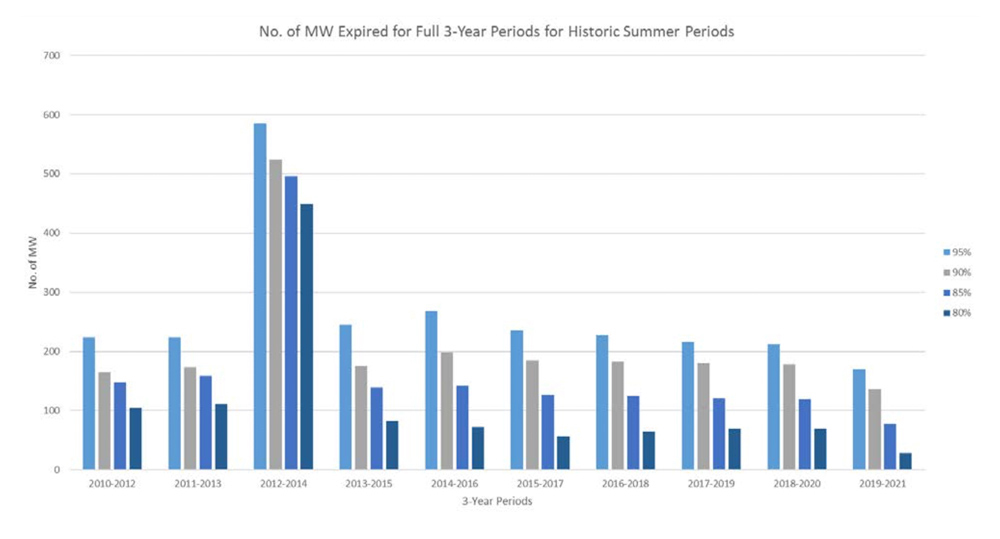NYISO on Tuesday proposed changes to three concepts of capacity resource interconnection service (CRIS): the retention notification process, transfers and partial expiration.
The project’s objective is to investigate ways to tighten CRIS retention rules where it is not fully utilized, Market Design Specialist Emily Conway told the Installed Capacity/Market Issues Working Group.
CRIS is a threshold requirement for an internal generator or an unforced capacity deliverability rights (UDR) facility with a terminus in a locality to participate in NYISO’s Installed Capacity (ICAP) market.
Notification Process
Current rules state that for a facility contemplating a CRIS transfer to a different location, it must notify NYISO prior to the start of the Class Year deliverability study in which the transfer will be evaluated. The ISO proposes to modify the rules to require retired units to demonstrate, prior to each deliverability study, whether a transfer (at the same or different location) is anticipated and feasible before the CRIS expires.
This requirement could make resources seeking CRIS more likely to be deliverable by removing the unused CRIS from the deliverability base case, Conway said.
Transfers
The proposed changes for same-location CRIS transfers would allow units to transfer their CRIS while still in the process of shutting down, or elect to continue operating as energy resource interconnection service only.
Units can currently only transfer unused CRIS at the same location if the facility is deactivating and the new unit will be online before the CRIS expires. Proposed modifications would permit same-location CRIS transfers even if the transferor unit is not deactivating, which could allow for more flexibility and potentially more deliverability for new resources, and thus less likelihood of CRIS units requiring system deliverability upgrades, Conway said.
The proposed changes would make the rules for same-location transfers consistent with the rules for different-location transfers with respect to deactivation requirements, Conway said.
Partial Expiration
NYISO currently sees value in limiting a portion of a unit’s CRIS where its existing CRIS exceeds its utilization and capability, such as when a facility requests CRIS at its full nameplate but goes in service at a lower megawatt level. The net megawatt output can likely never reach full nameplate, so the facility gets to hold onto more CRIS than it can ever use, absent an uprate or modification, Conway said.

Other examples include when a facility downsizes after obtaining its CRIS, or if a facility only uses a percentage of its CRIS over time in the ICAP market.
“If the ratio of the unit’s CRIS and utilization or capability is consistently falling below the specific threshold, a portion of that CRIS could be expired, which would potentially increase deliverability headroom,” Conway said. “For example, if a unit is consistently testing below 90% of its CRIS value, the CRIS could be expired.”
For the ISO proposal, “consistently” means for a consecutive three-year period. For units that are in an ICAP-ineligible forced outage or mothballed, the partial expiration rule would not be applicable, as they are have already began their three-year clock and could return to the system at full capacity.
For the threshold level, NYISO proposes to set it to 90% to remain consistent with trends of historic degradation levels.
If a unit falls at or below the threshold, the unit’s CRIS level would be reset to its maximum test or offer value within the three-year period, plus 5% of the unit’s original CRIS, which gives units flexibility for recoverable losses and maintenance repairs, Conway said.
The proposed changes would be effective on a rolling three-year, moving-forward basis, using the maximum test and/or offer value within that three-year period, and would be applicable to all generators as well as controllable lines.
If stakeholders decide later this year to prioritize this project, it could be a completed market design concept in 2022.


